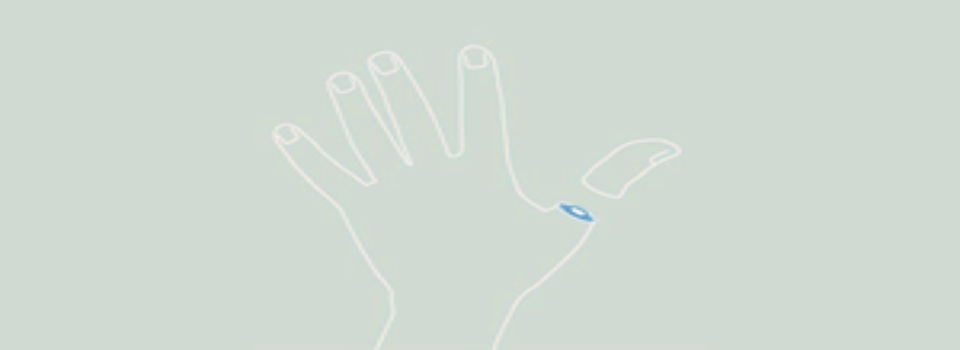What is it?
 Replantation is when a finger, hand, or arm that has been completely severed, is surgically reattached. We seek to restore as much use as possible of the injured part to the patient. Sometimes, however, replantation is impossible due to the fact that the body part is too damaged. In that case, we can complete the amputation and provide a prosthetic, if that’s what the patient chooses. Depending on the injury, this option may result in a quicker, more successful recovery than a replantation.
Replantation is when a finger, hand, or arm that has been completely severed, is surgically reattached. We seek to restore as much use as possible of the injured part to the patient. Sometimes, however, replantation is impossible due to the fact that the body part is too damaged. In that case, we can complete the amputation and provide a prosthetic, if that’s what the patient chooses. Depending on the injury, this option may result in a quicker, more successful recovery than a replantation.
If we are confident that the replanted part will function as well, if not better, than a prosthesis, we recommend replantation. Typically, we won’t perform a replantation on a finger or hand given that it would be painful, interfere with daily tasks, or not even work at all. After we fully inform you about the nature of the procedure, the expected recovery process, and the level of function that will be restored, you can make a decision about whether or not replantation is best. In making this important choice, patients must weigh the significant difficulties with the benefits.
What is the procedure like?
Replantation has several steps involved. First, we carefully remove the tissue that has been damaged. Next, we must shorten and rejoin the ends of the bones with pins/plates so that the healthy tissues can be restored. Then, we repair the nerves, veins, muscles, tendons and arteries. Occasionally, it’s also necessary to graft skin, bones, tendons or blood vessels.
What is the recovery process like?
After the surgery, the patient becomes the most crucial element to recovery. First, it’s very important that post-op replantation patients do not smoke at all. Smoking prevents proper blood flow and will interfere with recovery. Another way that patients can help aid circulation is by keeping the replanted body elevated above heart level.
There are, however, a few factors which effect recovery that are out of your control. Younger patients tend to regain better use of the replanted part due to the fact that nerves are more likely to grow back in young people. Also, there is a higher recovery rate for those who had a clean sever, as opposed to patients whose body part was crushed or pulled off. In addition, the probability that full function will return to the body part increases the further down on the arm the injury occurred. In order to restore use of the replanted part, two types of nerves must be re-grown: motor nerves that control muscle movement, and sensory nerves that allow you to perceive feeing. You can generally expect nerves to grow around an inch per month. One way to predict recovery time is by counting the number of inches the injury is from the tip of the finger. That number is the minimum number of months it will take for the patient to have sensation in that fingertip. Unfortunately, the part that has been replanted will never return to 100% functionality; 60 – 80% is considered excellent.
What is rehabilitation like?
The post-op journey for replantation patients is a long one and requires significant work and commitment on the part of the patient. First, tendons that have been repaired are put in protective braces that still allow the patient to move the body part. When the surgical wounds are completely healed, you may engage in limited-motion physical therapy to prevent stiffness in joints and the formation of excess scar tissue. Even after a successful recovery, many patients discover that they cannot do everything they once could. In some cases, a personalized devise may be used to enable patients to do certain tasks or activities.
Whether there is a replantation or an amputation performed, the effects are not merely physical. This process can also impact your emotions and mentality. Patients often experience feelings of anger, shock, and sadness when they first see the replanted/amputated body part, which may look very different than it did before. All of these feelings are completely normal and are a part of the healing process. Patients may seek the counsel of a counselor or psychologist to help them deal with their thoughts and feelings about this change.
Will there be additional surgeries?
Some patients may require another surgery that will further improve use of the replanted body part. The most common type of secondary surgeries are:
- Joint implants – Damaged joint surfaces are reconstructed to enable greater motion.
- Capsulotomy – Stiff or locked joints are released.
- Tenolysis – Tendons are freed from excess scar tissue.
- Nerve grafting – Scarred nerves or gaps in the nerves are replaced to increase nerve function.
- Fusion – Two bones across a joint are joined together to enable greater motion.
- Tendon or muscle transfer – Tendons/muscles are moved to another place in the body that may have more need for the tendon/muscle.
- Late amputation – The part may be removed if it does not function, causes pain, or gets in the way of normal hand use.


